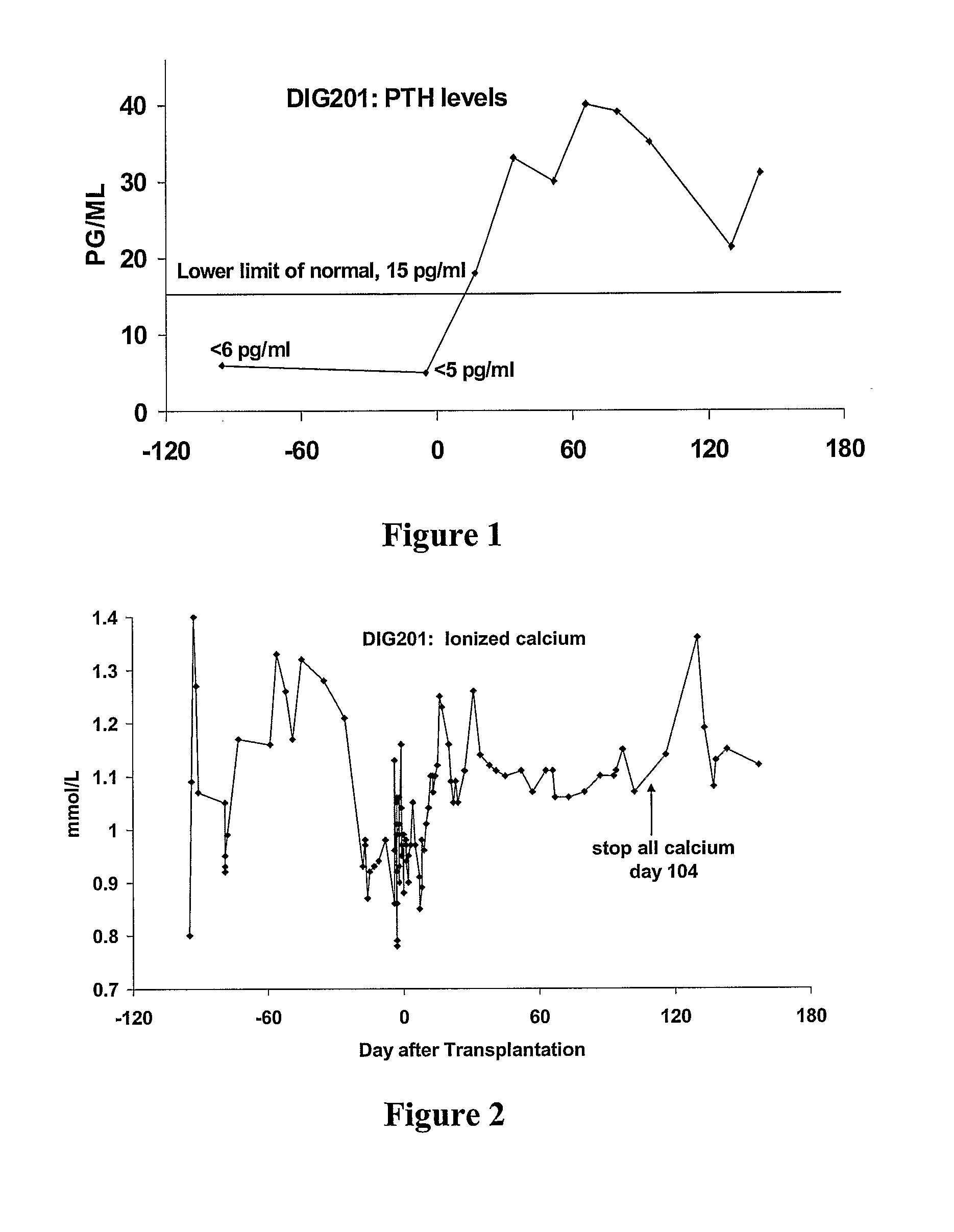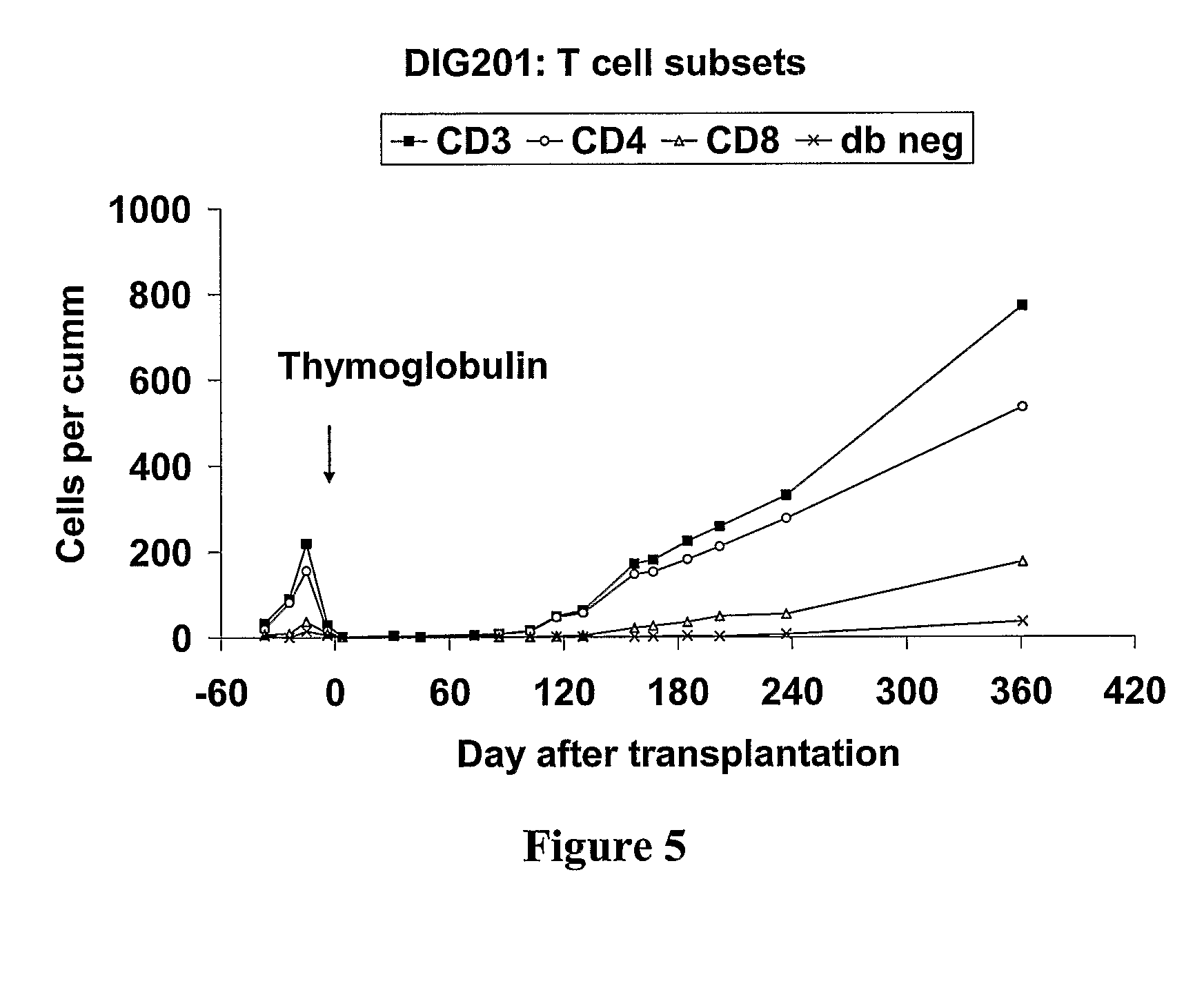Parathyroid and thymus transplantation in digeorge syndrome subjects
- Summary
- Abstract
- Description
- Claims
- Application Information
AI Technical Summary
Benefits of technology
Problems solved by technology
Method used
Image
Examples
example 1
DiGeorge Syndrome Patient 1
[0031]A female infant was diagnosed with DiGeorge syndrome based on hypoparathyroidism associated with a hypocalcemic seizure on day 11, ventricular septal defects requiring surgery at 1 month, and absence of T cells noted at 5 weeks of age. The 22q11 FISH test was normal.
[0032]An unrelated postnatal thymus was obtained for transplantation. The thymus shared an HLA-DR allele with the mother and the infant. The mother was used as the parathyroid donor. Her HLA types along with those of the thymus donor and recipient are shown in the Table below.
HLA-AHLA-BHLA-CHLA-DRB1Patient02013501040101010301350804011401Thymus01013501040101011101180105010301Parathyroid02013501040101010401180107010701
[0033]Rabbit anti-human thymocyte globulin was used as pre-transplant conditioning. Thymus slices were inserted into the quadriceps of the recipient in an open procedure after a 2-week culture period as described in M. Markert et al., Blood 102, 1121-1130 (2003). Concurrent p...
example 2
Follow-Up on Patient 1 and Additional Patients
[0036]After Example 1 above, parathyroid and thymus transplantation was done in three additional infants for a total of 4 infants with complete DiGeorge syndrome (DIG201, DIG203, DIG204, and DIG206). As of this writing the patients have not had seizures from hypocalcemia after parathyroid transplantation, nor have they developed nephrocalcinosis.
[0037]There have been no adverse events associated with the parathyroid donation or the transplantation.
[0038]For patient DIG204, the parathyroid transplant was given approximately one month after thymus transplantation because the donor had a thyroid nodule that had to be biopsied prior to use of a parathyroid gland from that parent. Thus, the parental parathyroid donor had two operative procedures, one for the thyroid nodule biopsy and a second for the parathyroid organ donation. The recipient also had two operative procedures, one for thymus transplantation and one for parathyroid transplantat...
PUM
| Property | Measurement | Unit |
|---|---|---|
| Fraction | aaaaa | aaaaa |
| Time | aaaaa | aaaaa |
| Mass | aaaaa | aaaaa |
Abstract
Description
Claims
Application Information
 Login to View More
Login to View More - R&D
- Intellectual Property
- Life Sciences
- Materials
- Tech Scout
- Unparalleled Data Quality
- Higher Quality Content
- 60% Fewer Hallucinations
Browse by: Latest US Patents, China's latest patents, Technical Efficacy Thesaurus, Application Domain, Technology Topic, Popular Technical Reports.
© 2025 PatSnap. All rights reserved.Legal|Privacy policy|Modern Slavery Act Transparency Statement|Sitemap|About US| Contact US: help@patsnap.com



